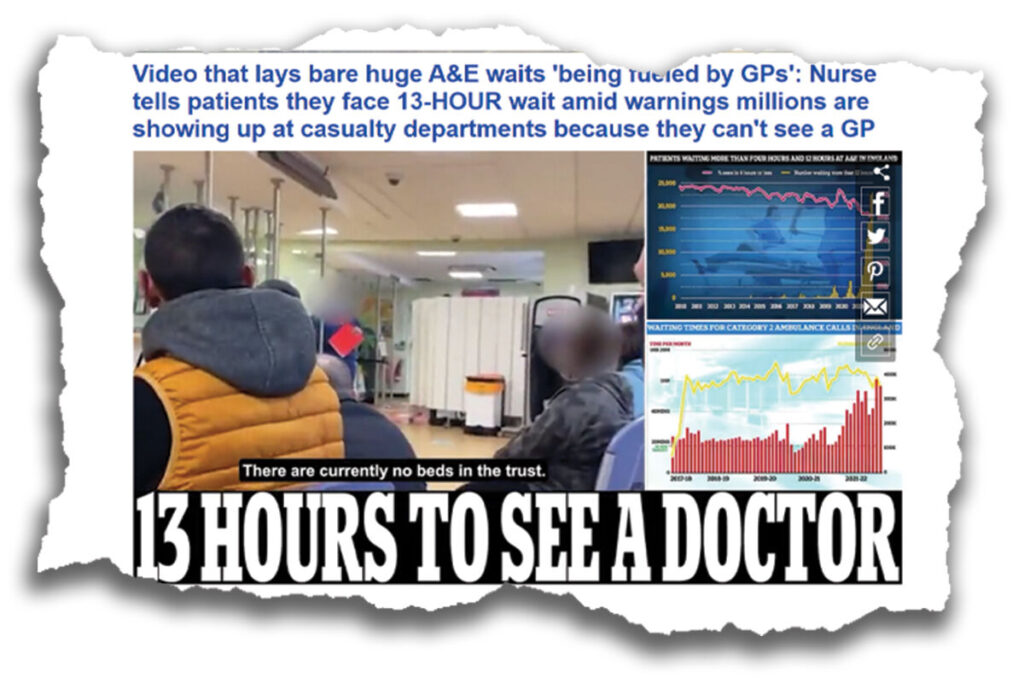Behind the headlines: are GPs ‘fuelling’ long A&E waits?

Rachel Carter seeks the truth behind the latest claims against GPs, as MailOnline is the subject of yet another press standards complaint
MailOnline found itself the subject of another complaint to the Independent Press Standards Organisation (IPSO) last month, after an article claimed GPs are ‘fuelling’ the A&E crisis. It is based on a video, filmed and shared online by a member of the public, of an NHS worker updating patients on A&E waits at Princess Alexandra Hospital in Harlow.
But while the video itself makes no mention of GPs, the MailOnline article suggests a lack of face-to-face GP appointments is to blame for the waits. This prompted Doctor’s Association UK to write a letter of complaint to IPSO, which had more than 2,000 signatories and argued the article was inaccurate. The RCGP also issued a response to the article, stating it was ‘unaware of any hard evidence’ linking GP access to A&E pressures.
Here, we look at some of the claims the article makes about GPs.
‘Fury at video that lays bare huge A&E waits ‘being fueled [sic] by GPs’: Campaigners say desperate patients are turning to overwhelmed casualty units because they can’t get face-to-face appointments‘
The article’s headline claims A&E waits are ‘being fueled by GPs’. But despite the quote marks, this is not attributed to anyone in the article itself.
The NHS worker filmed in the video makes no mention of GPs in her announcement. She can be heard telling patients the current wait in A&E for a doctor is seven-and-a-half hours and that the wait could get ‘up to 12 or 13 hours’. She also said there were currently no beds available in the trust.
The article does however include two patient testimonies, and a comment from a campaigning organisation, which do link problems with GP access to A&E presentations.
The Royal College of Emergency Medicine (RCEM) has previously warned difficulties in seeing a GP were leading to a crisis in emergency departments. A report in October by the college said a lack of access to family doctors was creating ‘dangerous crowding’ in A&Es.
The RCEM report does not say that a lack of access to GPs is creating ‘dangerous crowding’ in A&Es. It does however highlight that the lack of GPs, which is leading to difficulties with access, is one of a number of factors contributing to increased demand.
‘Tens of millions of GP appointments were cancelled or done remotely during Covid so doctors could focus on the virus, leading to a post-pandemic boom in demand. But many patients are still struggling to see a GP as services fail to bounce back, with less than half of appointments being conducted face-to-face’
Here MailOnline lumps two separate things together. Tens of millions of GP appointments were not ‘cancelled’, but many would have been converted to remote consultations due to the pandemic. On the second point, the figure is out of date. The latest NHS Digital data show 62% of appointments in general practice were face to face in April 2022.
In its complaint letter DAUK also highlighted that 25.3 million GP appointments were carried out in April 2022, up from 16.6 million in April 2020. There were also 2,028,228 A&E attendances in April 2022 compared with 916,575 in April 2020. It said this shows ‘all frontline health services are stretched’ but MailOnline had ‘unreasonably and inaccurately’ chosen to blame GPs for delays in hospitals.
‘Research by health watchdog the Care Quality Commission (CQC) found almost one in five A&E patients surveyed had resorted to emergency departments because they couldn’t get advice or treatment elsewhere. Of those, the research found, around one third (35 per cent) said there were no appointments available and 30 per cent said they were not able to get through to or access the service. In total, 4.7 million visits to hospital accident and emergency visits were attributed to a lack of access to GPs’
The research cited by MailOnline was jointly commissioned by the CQC and Barking Havering and Redbridge University Hospitals NHS Trust. It was a survey of 422 people attending A&E during a specific nine-day period in winter 2021. It was not clear where MailOnline got its figure of ‘one in five’ patients resorting to emergency departments because they couldn’t get advice or treatment online.
The figures on a lack of appointments elsewhere and patients’ inability to access other services appear to be from a question that received 63 responses. The CQC report even says ‘please treat results with caution as they are based on only 63 participants’.
MailOnline did not made clear the size of the survey. Furthermore, the 4.7 million visits claim is not accurate and not mentioned in the CQC report, but seems to be an extrapolation of the question that had 63 responses. Most damningly, the report itself concluded there was no ‘clear single reason driving numbers of A&E attendances’.
Pulse understands the CQC made these caveats with the data clear to MailOnline.









